Intel Unveils Lunar Lake Architecture: New P and E cores, Xe2-LPG Graphics, New NPU 4 Brings More AI Performance
by Gavin Bonshor on June 3, 2024 11:00 PM ESTBetter I/O: Thunderbolt 4, Thunderbolt Share, Wi-Fi 7 Included
Intel's developments in I/O and connectivity bring the current generation of connectivity to the Lunar Lake platform. Key highlights in terms of I/O, which is set for Lunar Lake, include native Thunderbolt 4 connectivity, the new Thunderbolt Share functionality, and the upgrade to Wi-Fi 7 wireless connectivity.
Thunderbolt 4 builds excellently on the foundation laid by Thunderbolt 3, which isn't new from a controller standpoint. It does offer enhancements in connectivity and bandwidth, and being internally opted for is the key difference here. Three Thunderbolt ports are now allowed for every laptop, making this feature very flexible and usable.
Thunderbolt Share is a new technology that will come with Lunar Lake. It allows multiple PCs to share screens, monitors, keyboards, mice, and storage across systems in a straightforward and fast manner at up to 60 frames per second. This is very important in collaborative environments, whereby sharing data is made easy and quick, thus improving workflow. When used in productivity tasks, the utility allows users to sync folders and has a drag-and-drop file-sharing function between PCs at high speeds.
Wi-Fi 7 is also integrated into the Lunar Lake platform, which Meteor Lake omitted regarding wireless connectivity. This multi-link operation feature of Wi-Fi 7 adds wireless signal integrity and reliability and increases throughput with less latency by duplicating packets across all links above. This implies smoother performance and better load balancing, even in demanding applications. The greatest benefit from Wi-Fi 7's new capabilities comes to the user when dealing with bandwidth-intensive tasks.
It also includes RF Interference Mitigation technology, where the DDR clock frequency is automatically tuned to minimize interference with Wi-Fi signals. This function saves 50% of throughput degradation caused by memory noise; thus, theoretically, it should uplift the performance of the entire wireless network. Another positive effect users can expect is robust connectivity, even in very demanding environments.
Intel's partnership with Meta goes further, tapping into this Wi-Fi 7 technology to enhance VR experiences. This further optimizes the video latency performance and reduces interference, thus making VR applications more seamless and engaging, at least from a wireless connectivity viewpoint. The new enhancements of Wi-Fi 7 offer high, reliable speed with low latency to meet the most challenging needs in VR applications.


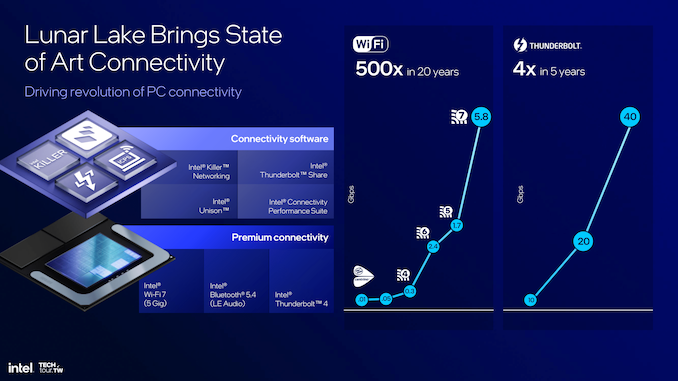
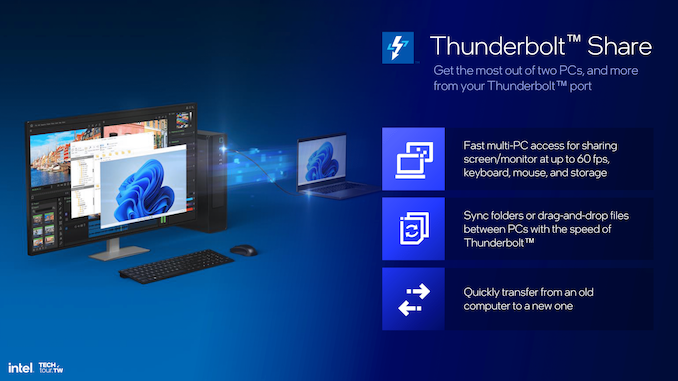
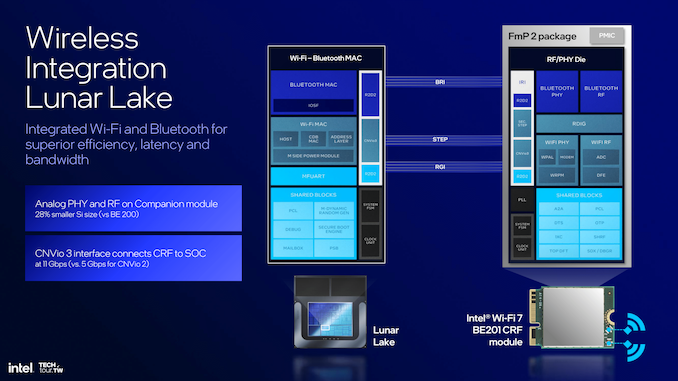
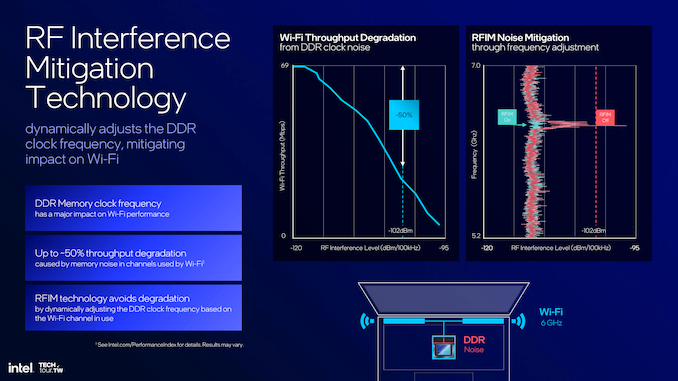
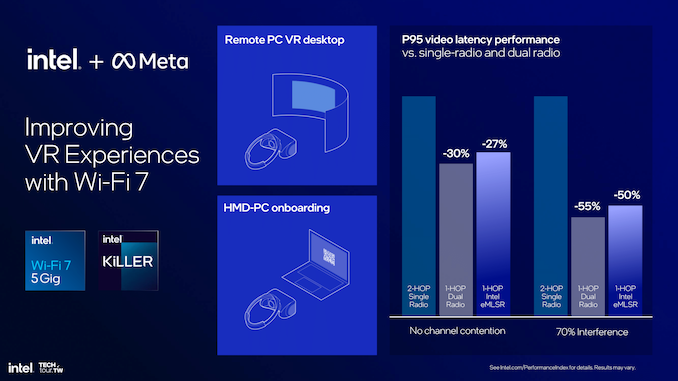








91 Comments
View All Comments
Bruzzone - Thursday, June 6, 2024 - link
Thanks BushLin, I also find all the engineering and end use perspectives interesting as a compliment resource specific market observations I triangulate for common perspective and some not so common perspectives from time to time.My full AMD workstation, desktop and mobile what's selling in the last 6 weeks report is now posted at Seeking Alpha.
I posted here in comment string and just look down comments to the pointer and the full report is easily downloadable. There is also a pointer within the downloadable report itself to the same Intel data last eight weeks.
https://seekingalpha.com/article/4697165-computex-...
Mike Bruzzone, Camp Marketing Reply
lmcd - Wednesday, June 12, 2024 - link
if you don't understand how inventory affects pricing then stick to reddit Replyballsystemlord - Wednesday, June 5, 2024 - link
In answer to your question, "It's worth the wait to Lunar and Arrow?"In terms of Intel's CPU/GPU performance, I doubt it.
In terms of power efficiency, they might have caught up. We'll have to wait for reviews. Only partially refreshing the screen should lead to a nice performance improvement and/or efficiency improvement of the GPU.
In terms of QoL improvements, it looks like Intel went all out for this new generation. In the following statements, I'm assuming that Intel's able to deliver. Having multiple TB4 ports is useful. Having TB4 with the ability to transfer files is also useful. So is better Wi-Fi. If anything, this might be *the* killer feature of the series. Likewise, VVC, assuming it's not badly licenced, should prove useful. I wonder if VVC is supported by their Quicksync encoder...
Don't misunderstand me, I appreciate what you've said above. But I really don't see this gen failing badly unless AMD/Qualcomm can equal them in terms of useful features. Reply
Bruzzone - Thursday, June 6, 2024 - link
Ballsystemlord,I also think Intel's on it way back to mobile efficiency. While Meteor is ramping, I perceive OEMs from channel data and enterprise IT especially Intel shops on 'applications utility' value, and validation, waiting for Lunar / Arrow and or Strix. Granite Ridge I see facing an AM5 saturation issue and there is sooo much Raphael and Vermeer in the channel to clear R9K price will likely be held up while Raptor/Alder and Raphael/Vermeer nose dive on channel liquidation for capital reclaim to buy new like q4 into first half 2025.
From the channel data AMD and Intel are dumping all over Snapdragon X whose launch is into a deflationary price cycle at least through q1 2025. Lots of downward price and margin pressure.
Me, I am looking for a new (used) laptop, more a desktop replacement than Office low power and AI does not matter to me currently. I was interested in a used Tiger Octa or Cezanne H_ with MXM GPU but waiting a wee bit more because laptop prices including gaming are in a nose dive.
Means I'll be able to move up to new 13th Raptor in overage supply condition or used Alder or Rembrandt H with minimally Ampere. AMD Cezanne and Rembrandt and 13th and 12th pricing just let go and it get's better into q4. See my Seeking Alpha report on supply, trade-in and sales trend pointed to above.
mb Reply
GeoffreyA - Thursday, June 6, 2024 - link
Though my computer is all right, I'd like to upgrade to Cezanne or Renoir, either 5600G or 4600G. (It will likely be the latter because of motherboard woes.) Here, the prices have been stuck for ages. Do you think they'll ever drop? Replyballsystemlord - Thursday, June 6, 2024 - link
GeoffreyA, I'm not involved with the markets like Mr. Bruzzone, but my recent experience with trying to get a GPU for 4 years in a row says, "Yes, prices will go back down." ReplyGeoffreyA - Friday, June 7, 2024 - link
Thanks. It's just puzzling because I don't understand the markets and economic side of things too well. Replylmcd - Wednesday, June 12, 2024 - link
5600G and 4600G are weird parts because they're dependent on AMD's mobile positioning. The latter (4600G) isn't being manufactured anymore to my knowledge -- Renoir is useless now to AMD because it was supplanted in mobile by the updated Mendocino platform, which likely will never be brought to desktop. I am not sure pricing on the 4600G will ever make sense.5600G is Cezanne, which is still being manufactured for 7x30 series (or was until recently).
However, at this point Cezanne is 7nm and easily binned, but there is no direct 5600G replacement yet as AMD did not launch a 7000 series G product. The 8000G series (just announced) should push 5600G into clearance pricing. Reply
GeoffreyA - Thursday, June 13, 2024 - link
Thanks. Good explanation. I'd go for the 5600G, but my motherboard, B450 Tomahawk, apparently has issues with this very CPU, despite there being BIOS support for quite some time. Online, people haven't had a solution, and MSI says nothing. Replymode_13h - Thursday, June 6, 2024 - link
Hey, where's the rest of the slide deck? There are definitely some slides I've seen elsewhere that aren't featured in the article. I'm used to this site posting the entire slides at the end. Reply